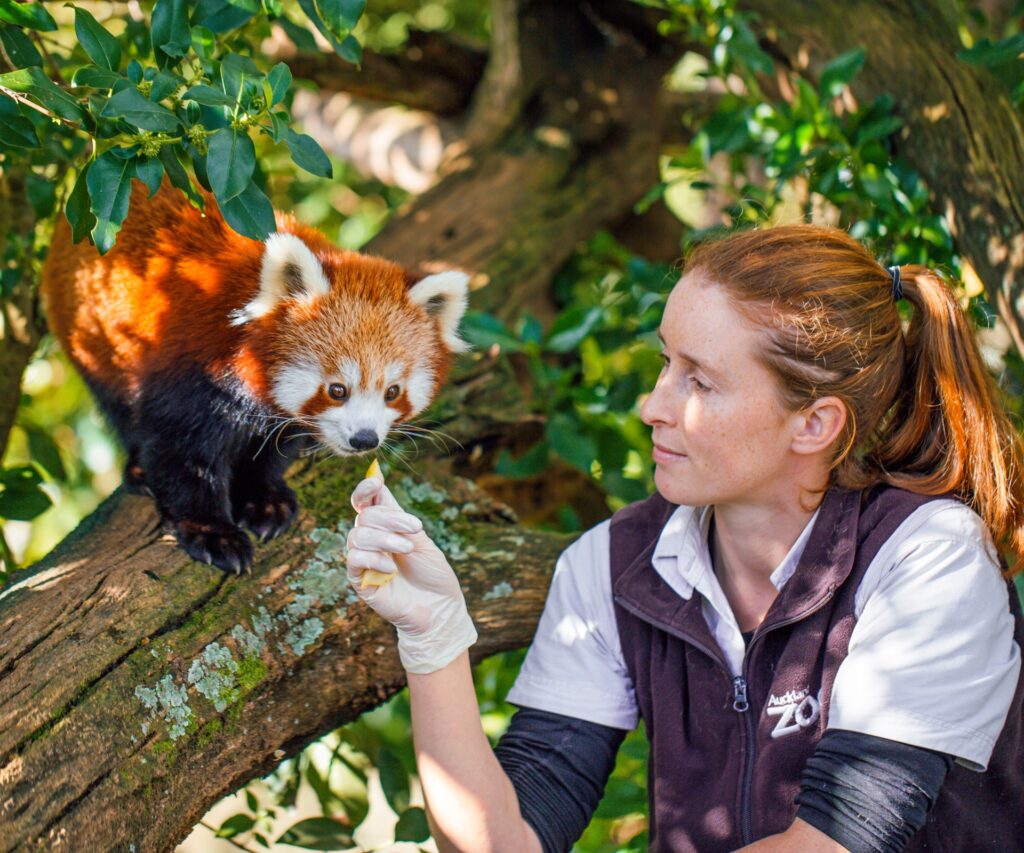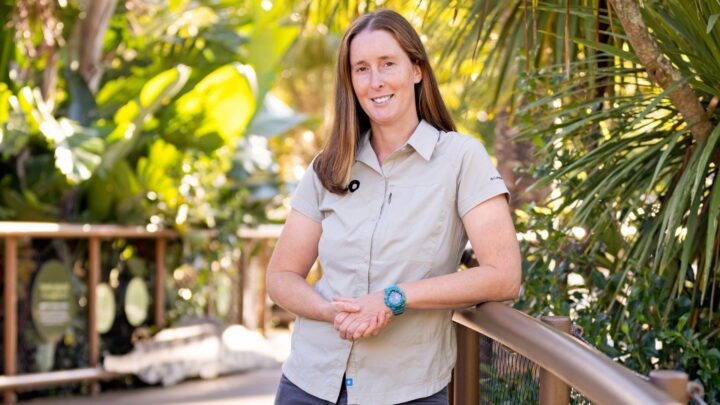Watching bright-eyed 13- week-old Sumatran tiger cub Cahya climb all over her mum Zayana, playing with and tugging on her tail, zookeeper Kristin Mockford can’t take her eyes off the impressive pair.
After being an integral part of the Auckland Zoo team caring for Zayana through two pregnancies and births, and the loss of three cubs in the last nine months, seeing the big cat develop into such a good mother has been a career highlight.
“Our tiger mum Zayana is a very people-focused cat,” enthuses Kristin, 34. “When I arrive in the morning, she’s playful and bouncing, and will move along with you, her face rubbing on the mesh. She’s excited I’m there to feed her.
“Seeing her pass that along to Cahya, who’s turning into a mini-me of Zayana, is amazing.”
The senior keeper is quick to clarify the keepers don’t ever enter the exhibit with the tigers. But, they do work alongside them in their off-habitat area for training, feeding and health checks, with mesh and other measures allowing them to get closer while always being safely separated.

“They’re hand-injection trained. They line up against the mesh so we can do it in a nice stress-free way without having to sedate them,” tells Kristin. “Maintaining that level of relationship takes a lot of time and work. But it’s so rewarding to see them slowly making progress and accepting us.”
Kristin and the team have also been training them to weigh weekly and to take blood samples from their tails. All while they’re being positively reinforced with chunks of meat or cat milk in a syringe.
Zayana, five, and her male mate Ramah, six, joined Auckland Zoo from the US in late 2022, with the hope of contributing to the global breeding programme.
“It was a fun challenge getting to know two new tigers. They had just shifted halfway across the world,” recalls Kristin. She’ll never forget September 2023 when they spotted a cub had been born in the tiger habitat.
She explains it then took hours for the second cub to arrive – much longer than normal. Unfortunately, they could instantly see it was stillborn.

“Zayana’s natural instincts kicked in to consume the cub because in the wild, a tiger would not want to draw in predators who could attack,” says Kristin, adding, if only one survives, they will often smother it.
This was the case with Zayana and is because tigers won’t reproduce again for around two years while raising cubs. So to give them the best chance of rearing them to adulthood, they try to get pregnant again with multiples.
“It was a brutal shift from elation to sadness, but also one of awe. Seeing those natural behaviours kick in and doing what her wild counterparts would do.”
While it was a challenging experience, Kristin learnt a lot about caring for Zayana through pregnancy and birth. Just two and a half weeks later, Zayana was expecting again. This time she gave birth to two healthy cubs on January 2 this year.
Kristin was ecstatic, telling the Weekly Zayana is a natural mum. She often chooses to bring her cub on display for the public.
In a delightful twist, dad Ramah, who is kept separate from the females, also appears to be smitten with young Cahya.
“He looks like he’s completely in love with and obsessed with his daughter. We didn’t know if it would be that way, but they love having dens beside each other overnight. It’s very cute and so nice to see that family bond.”

It’s been a silver lining after Zayana’s other cub tragically passed away at four weeks old following a fall and brain injury.
“It was a rough time for us,” shares Kristin, who alongside the team chose Cahya as the remaining cub’s name.
Meaning “light” in Indonesian, it’s a nod to the Sumatran tiger species’ native heritage and a symbol of hope after losing three cubs.
It’s now been 11 years since Kristin first walked into the zoo for work experience during her studies. It’s clear the dedicated keeper is more passionate now than ever.
“Once you work with the cats for such a long period of time, you form relationships with them. They have a really special bond with us. The best part of my day is that initial hello. When they’re so keen to see you and want to interact,” she smiles.
“And now there are all these things to teach Cahya. We’re already starting basic training so she’s ready for vaccinations next year. There are so many cool things to look forward to.”
 Photos: Carmen Bird
Photos: Carmen Bird


